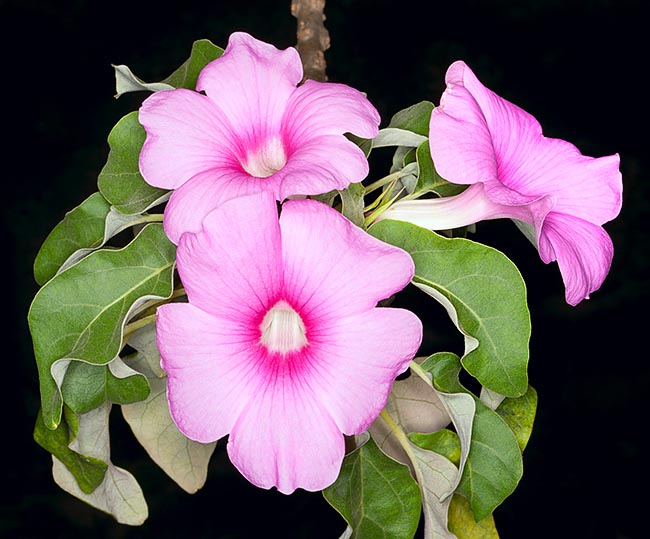Family : Pedaliaceae

Text © Pietro Puccio

English translation by Mario Beltramini

Uncarina abbreviata is an 8 m small tree with flowers of 6-8 cm of diameter © Giuseppe Mazza
The species is native to the south-western zone of Madagascar where it lives on the dunes or in the deciduous woods on red sandy (ferruginous) soils.
After some, the name of the genus is the diminutive of Uncaria, genus with which there should be some affinities; the name of the species is the past participle of the Latin verb “abbrevio” = to abbreviate, to shorten.
Common names: farehitsy bevata, farehitsy, farehitra (Malagasy).
The Uncarina abbreviata (Baill.) Ihlenf. & Straka (1962) is a shrub or small deciduous tree up to 8 m tall with slightly enlarged stem at the base, little ramified. The leaves, on a 10-14 cm long petiole and grouped at the extremity of the branches, are lanceolate or sub-trapezoidal with entire or sinuate margin, green on the upper page, greyish white below, 6-8 cm long and 5-7 cm broad. The inflorescences are axillar cymes with 1-3 flowers with funnel-shaped corolla with five lobes, of 6-8 cm of diameter, of mauve red colour with purple red ring in the throat and white tube. The fruits are compressed ovoid capsules, winged, about 6 cm long and 3,5 cm broad, covered by thorns, but on the wings, uncinate, about 2,5 cm long, particularly treacherous, which facilitate the dispersion of the species by sticking to the skin of the animals, or simple, 0,4 cm long; the triangular seeds are about 0,7 cm long. It reproduces by seed in sandy soil kept humid at the temperature of 22-24 °C.
Relatively little cultivated species, mostly subject for collection, in pot, by the lovers of caudiciform plants, it requires an exposition in full sun, or however the maximum possible luminosity, and a perfectly draining soil; from slightly acidic to slightly alkaline. Even if it can stand in winter, during the resting time, perfectly dry, rare and for very short period values of temperature close to 0 °C, it is better not to expose the plant at temperatures lower than 14 °C. In summer, the waterings must be regular, but allowing the substratum to dry up almost completely before watering again, stopped in winter. Parts of the plant are locally utilized in the traditional medicine, the fruits for catching mice.
Synonyms: Harpagophytum abbreviatum Baill. (1887).
→ To appreciate the biodiversity within PEDALIACEAE family please click here.
